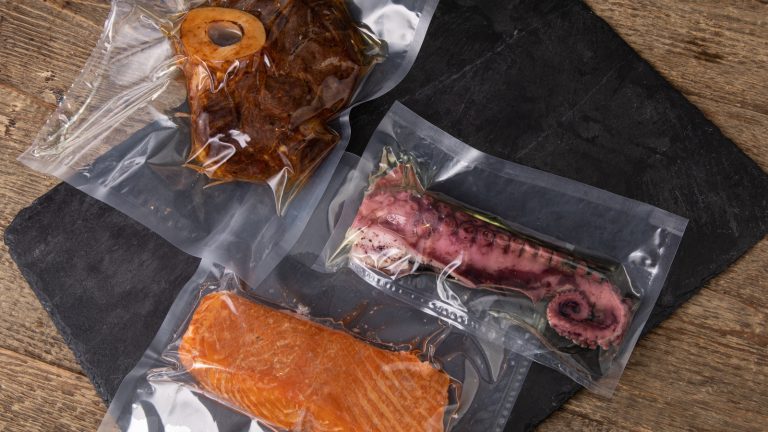Many fast food chains boast about using fresh, not frozen food, but what about Chick-fil-A? Since introducing its original chicken sandwich in 1964 (which we ranked alongside other fast food chicken sandwiches), the brand has stuck to the same recipe: boneless breast fillets hand-breaded and pressure-fried in peanut oil. But here’s the twist — those chicken breasts arrive frozen.
Shipments come in regularly and are stored in walk-in freezers alongside other menu staples. From there, the chicken is slowly thawed in a dedicated fridge for 24 hours before it’s prepped. Once thawed, each piece is inspected for imperfections, hand-breaded in seasoned flour, and cooked in a custom pressure fryer modeled after founder Truett Cathy’s family kitchen technique. While frozen meat is often viewed as lower quality, frozen chicken processed commercially holds up nutritionally when compared to fresh. So yes, it starts frozen, but by the time it hits your stomach, it’s been cooked fresh from raw.
Why Chick-fil-A’s chicken still tastes fresh
Frozen chicken doesn’t have to taste frozen. Chick-fil-A’s system is designed to make sure it doesn’t. Every restaurant follows a lean production method that keeps prep tightly timed to customer demand. An algorithm predicts how much chicken to thaw, bread, and fry, and staff only prep what they expect to sell. It’s a fast food model built around real-time freshness.
Fillets that sit for more than 20 minutes after cooking aren’t served. They’re cooled, chopped, and repurposed for soups. That’s a big contrast to places that keep cooked items on warming trays for extended periods. The same tightly timed prep applies to other parts of the menu, including Chick-fil-A breakfast. Between the just-in-time prep, detailed quality checks, and pressure-frying technique, Chick-fil-A’s chicken feels and tastes fresh, even if it didn’t arrive that way.






